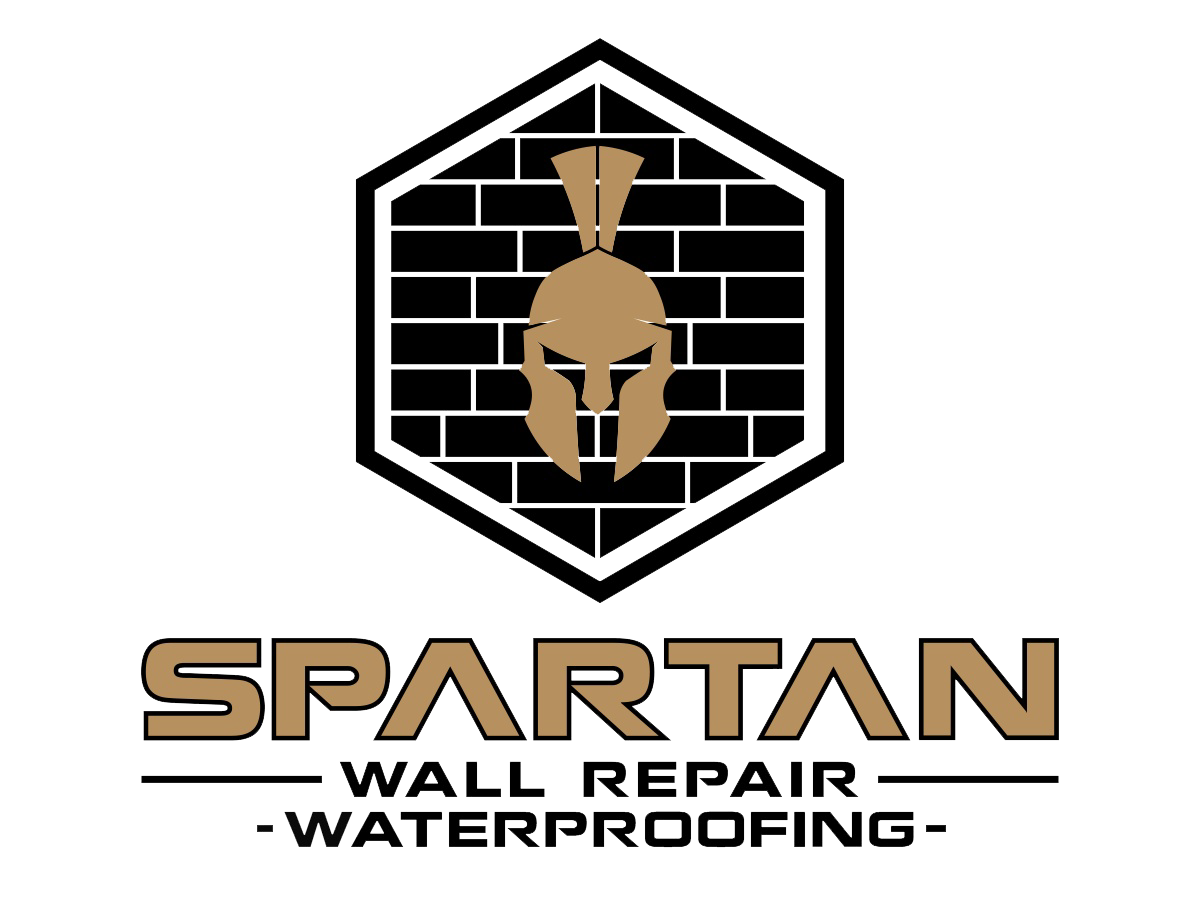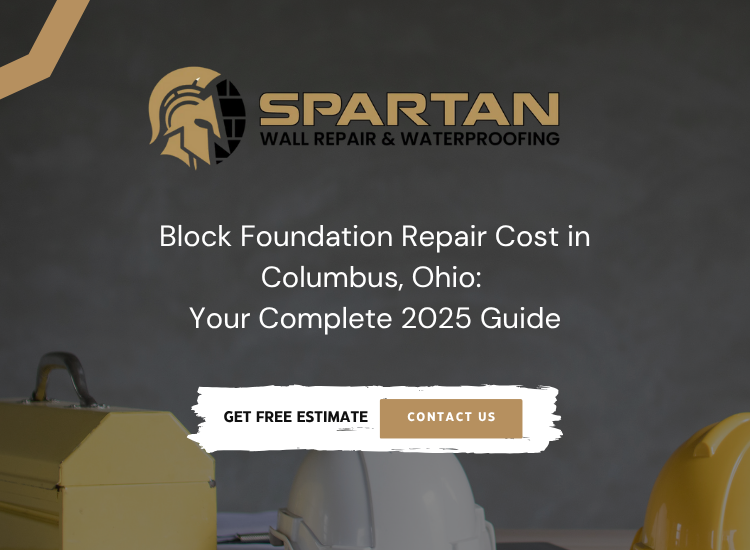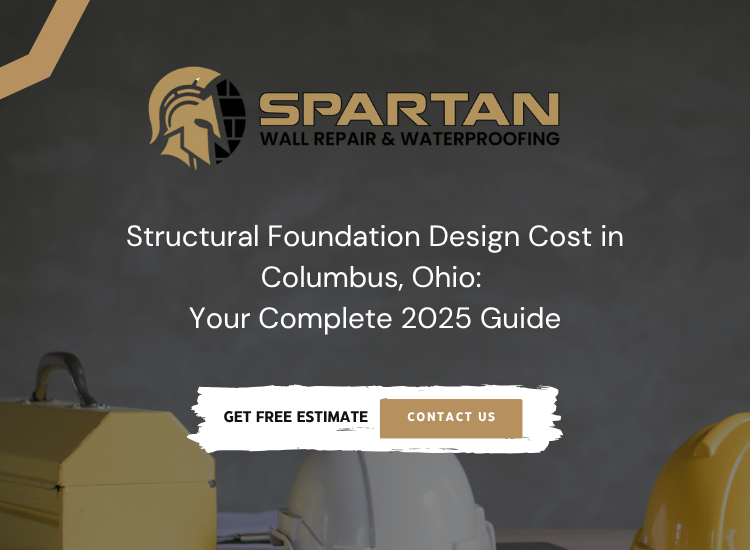The foundation repair industry is experiencing a transformative shift toward environmental sustainability, driven by growing awareness of climate change and the urgent need to reduce construction’s carbon footprint. As cement production contributes approximately 8% of global CO2 emissions, innovative companies are pioneering eco-friendly alternatives that maintain structural integrity while dramatically reducing environmental impact.
Modern sustainable foundation repair encompasses revolutionary approaches including recycled carbon fiber reinforcement, bio-based soil stabilizers, and environmentally certified polyurethane systems. These technologies represent more than simple material substitutions—they embody a fundamental reimagining of how we approach structural repair, prioritizing both performance and planetary health in equal measure.
The Environmental Imperative in Foundation Repair
Carbon Footprint of Traditional Methods
Traditional foundation repair methods rely heavily on cement-based solutions that generate massive environmental costs. Research demonstrates that cement production has remained one of the main sources of CO2 emissions, and from 2010 to 2018, global cement production increased from 3,310 to 4,100 million tons—a 23.8% increase that underscores the urgent need for sustainable alternatives.
The environmental impact extends beyond carbon emissions to include resource depletion, energy consumption, and waste generation. Traditional repair methods often require extensive excavation, material transportation, and disposal of damaged components, creating additional environmental burdens that sustainable approaches can dramatically reduce.
Economic and Regulatory Drivers
Federal initiatives like the EPA’s Buy Clean program are targeting a 50-52% reduction in emissions by 2030, with net-zero goals by 2050. Public infrastructure projects now prioritize low-carbon materials, creating market incentives for sustainable foundation repair solutions that meet evolving environmental standards.
The economic benefits of sustainable repair extend beyond regulatory compliance to include reduced material costs, enhanced durability, and improved long-term value propositions that make eco-friendly solutions increasingly attractive to property owners and contractors alike.
Carbon Fiber Reinforcement: Lightweight Strength with Sustainable Benefits
Advanced Recycling Technologies
Carbon fiber reinforcement represents a revolutionary approach to foundation strengthening that combines exceptional performance with environmental responsibility. Recent scientific research has developed novel environmentally friendly recycling methods for carbon fiber reinforced polymer composites, using mild solvolysis routes at room temperature and atmospheric pressure.
The recycling process employs formic acid as a separation reagent, achieving up to 93% retention of performance compared to virgin materials. This breakthrough enables recycled carbon fiber composites to retain structural properties suitable for demanding foundation applications while dramatically reducing the environmental impact of fiber production.
Performance and Environmental Advantages
Carbon fiber foundation repair systems offer remarkable tensile strength surpassing steel while maintaining feather-light weight that minimizes installation impact. The material’s flexibility allows adaptation to natural soil movements, providing long-term stability with minimal environmental disruption.
Professional installation expertise ensures that carbon fiber systems deliver 50-year lifespans, significantly reducing the need for repeated repairs and associated environmental costs. The non-invasive installation process eliminates excavation requirements, preserving landscaping and reducing construction waste.
Circular Economy Integration
Innovative companies like REGEN Fiber exemplify the circular economy by recycling end-of-life wind turbine blades into strong, flexible reinforcement fibers for concrete applications. This process transforms waste materials into high-performance construction additives, eliminating landfill waste while providing superior structural reinforcement.
The 100% recycled fiber additives not only reduce embodied carbon but also align with major sustainability standards including LEED certification, demonstrating how foundation repair can contribute to broader environmental goals.
Sustainable Material Innovation in Foundation Construction
Recycled Concrete and Aggregates
Eco-friendly foundation construction increasingly incorporates recycled concrete and aggregates that reduce demand for virgin materials while minimizing the environmental impact of concrete production. These materials offer reduced resource consumption and lower carbon footprints while maintaining structural performance.
The use of recycled materials in foundation construction supports sustainable building practices that extend beyond immediate environmental benefits to include enhanced durability and lifecycle performance. Recycled concrete demonstrates excellent weathering resistance and maintains structural integrity over decades of service.
Bio-Based Foundation Materials
Emerging bio-based materials are revolutionizing foundation construction through renewable resources that sequester carbon during growth. Hempcrete, created from hemp hurds and lime, provides carbon-negative construction that absorbs more CO2 during hemp cultivation than is emitted during processing, creating net environmental benefits.
Advanced composite materials incorporating natural fibers demonstrate significantly lower greenhouse gas emissions during production—up to 60,000 times lower than traditional carbon fibers while providing adequate performance for many foundation applications.
Revolutionary Biopolymer Soil Stabilization
Natural Polymer Science
Biopolymer soil stabilization represents one of the most promising developments in sustainable foundation repair. Scientific research published in Nature demonstrates that biopolymers such as Xanthan Gum, Guar Gum, and Beta 1,3/1,6 Glucan show dominant effects on soil strength improvement with enormous potential for future sustainable engineering.
The optimal biopolymer concentrations—approximately 2% for Xanthan Gum and 1% for Guar Gum—provide significant soil stabilization while remaining completely biodegradable and environmentally benign. These natural materials can increase soil compressive strength by up to 40-fold, making them suitable for supporting construction loads.
Diverse Biopolymer Applications
Recent innovations include inulin biopolymer, which can be extracted from agricultural waste and provides up to a 40-fold increase in unconfined compressive strength, surpassing 8 MPa. This makes treated soil samples suitable for mitigating erosion and supporting construction as subgrade and foundation materials.
Comprehensive research reviews highlight biopolymer applications including dust control, soil strengthening, erosion control, and foundation stabilization. The technology offers remarkable advantages including complete biodegradability, renewable sourcing, and superior performance compared to traditional chemical stabilizers.
Economic and Environmental Benefits
Market analysis of biopolymer costs shows that Xanthan Gum and polyacrylamide are available for less than $2,000 per ton, making them cost-competitive with traditional stabilizers while providing superior environmental benefits. The materials require no special handling or disposal procedures, eliminating hazardous waste concerns.
The environmental advantages extend beyond carbon reduction to include enhanced soil ecosystems, improved water retention, and biodegradation that enriches rather than pollutes soil environments over time.
Environmentally Certified Polyurethane Solutions
NSF/ANSI 61 Safety Standards
Modern polyurethane foam systems have achieved unprecedented environmental safety through rigorous certification processes. Leading foundation repair companies use AP LIFT 430, which is certified by Truesdail Labs to NSF/ANSI 61-5 standards—meaning it’s approved for contact with drinking water and poses no environmental risk.
Multiple contractors now utilize NSF 61-5 certified chemicals including Spetec PUR F400, H100, H200, and other formulations that meet the highest safety standards for potable water contact. This certification ensures that polyurethane applications protect both structural integrity and environmental health.
Sustainable Manufacturing Processes
Progressive manufacturers like HMI produce polyurethane foam materials comprising more than 40% recycled content, significantly reducing environmental impact compared to virgin material production. These recycled components are supercharged with catalysts, providing enhanced reaction times while reducing petroleum-based raw material requirements.
The biobased product certifications achieved by modern polyurethane formulations demonstrate substantial renewable content that supports sustainable construction goals while maintaining superior performance characteristics.
Environmental Performance Advantages
Professional applications demonstrate that polyurethane foam creates minimal waste through precise site mixing and application. The non-toxic, low-VOC formulations ensure indoor air quality protection while the material’s durability eliminates the need for frequent reapplication.
Industry associations confirm that flexible polyurethane foam ranks among the most environmentally benign materials in widespread use, with successful recycling programs that divert hundreds of millions of pounds of post-consumer waste from landfills annually.
Sustainable Installation and Application Methods
Minimally Invasive Techniques
Eco-friendly foundation repair prioritizes techniques that minimize environmental disruption during installation. Carbon fiber reinforcement applications require no excavation, preserving existing landscaping and eliminating soil displacement that traditional methods often require.
Polyurethane injection processes utilize penny-sized injection holes and self-contained equipment that reduces site impact while delivering precise structural support. The rapid 15-minute cure time eliminates extended construction periods that disrupt communities and ecosystems.
Energy-Efficient Application
Modern sustainable repair methods require significantly less energy than traditional approaches. Polyurethane foam production and application consume less energy than conventional repair materials, while the insulating properties of applied foam contribute to long-term building energy efficiency.
The elimination of heavy equipment requirements for most sustainable repair methods reduces fuel consumption, noise pollution, and air quality impacts typically associated with traditional foundation repair projects.
Lifecycle Analysis and Long-Term Sustainability
Durability and Maintenance Reduction
Sustainable foundation repair solutions demonstrate superior longevity that provides environmental benefits through reduced maintenance requirements. Carbon fiber systems offer 50-year lifespans, while certified polyurethane applications provide decades of reliable performance without degradation.
Biopolymer soil treatments show excellent resistance to environmental cycling, maintaining structural integrity through wet-dry and freeze-thaw cycles that would degrade traditional chemical stabilizers. This durability translates to reduced lifecycle environmental impact through eliminated replacement needs.
End-of-Life Considerations
Sustainable materials prioritize end-of-life environmental responsibility. Biopolymers biodegrade safely into soil nutrients, while recycled carbon fiber systems can be reclaimed for future applications. Certified polyurethane systems remain inert and stable, eliminating concerns about leaching or environmental contamination over time.
The circular economy approach increasingly adopted by sustainable foundation repair ensures that materials maintain value through multiple use cycles, reducing waste and resource consumption compared to traditional linear consumption models.
Economic Analysis of Sustainable Foundation Repair
Cost-Effectiveness Considerations
While sustainable materials may carry higher initial costs, lifecycle analysis demonstrates superior economic value through reduced maintenance, enhanced durability, and avoided environmental compliance costs. Carbon fiber reinforcement often proves more economical than invasive replacement strategies when total project costs including site restoration are considered.
Biopolymer soil stabilization offers competitive pricing with Xanthan Gum and other effective biopolymers available at under $2,000 per ton, making sustainable solutions accessible for diverse foundation repair applications.
Market Growth and Investment Opportunities
The sustainable construction market continues expanding as regulatory requirements and consumer preferences drive demand for environmentally responsible solutions. Federal Buy Clean initiatives create additional market incentives for sustainable foundation repair methods that meet evolving environmental standards.
Investment in sustainable foundation repair technologies provides competitive advantages through regulatory compliance, enhanced project efficiency, and alignment with growing environmental consciousness among property owners and regulatory bodies.
Future Directions in Sustainable Foundation Repair
Emerging Technologies
Research continues advancing sustainable foundation repair through innovations including self-healing materials, advanced biopolymer formulations, and integrated monitoring systems that optimize performance while minimizing environmental impact. Scientific developments in biopolymer chemistry promise even more effective and sustainable soil stabilization solutions.
The integration of artificial intelligence and IoT monitoring with sustainable materials enables predictive maintenance that further reduces environmental impact through optimized intervention timing and minimized material usage.
Industry Transformation
The foundation repair industry’s embrace of sustainability represents a fundamental transformation from reactive repair to proactive, environmentally conscious structural stewardship. This evolution positions sustainable methods as standard practice rather than alternative options.
Professional Sustainable Foundation Services: SpartanWallRepair.com
Leading the transition to sustainable foundation repair, SpartanWallRepair.com combines environmental responsibility with proven structural expertise. Our commitment to eco-friendly solutions ensures that your foundation repair needs are met while minimizing environmental impact and supporting a sustainable future.
Sustainable Service Portfolio:
- Recycled carbon fiber reinforcement for long-lasting wall stabilization
- NSF-certified polyurethane systems safe for environmental and human health
- Bio-based soil stabilization using renewable biopolymer technologies
- Recycled material integration reducing waste and resource consumption
- Energy-efficient application methods minimizing construction environmental impact
Environmental Commitment:
- Carbon footprint reduction through sustainable material selection
- Waste minimization via precise application and recycled content
- Ecosystem protection through non-invasive installation techniques
- Long-term durability reducing lifecycle environmental impact
- Regulatory compliance meeting and exceeding environmental standards
Contact Information:
- Phone: (614) 368-7612
- Address: 14191 State Rd, Ostrander, OH 43061
- Google Business: 5.0 stars with 43 reviews
Connect With Us:
- Facebook: Sustainable Foundation Solutions
- Instagram: @spartanwallrepair
Schedule Your Sustainable Assessment Join the movement toward environmentally responsible foundation repair. Contact SpartanWallRepair.com today to learn how sustainable solutions can protect your structure while supporting planetary health.
Industry Resources and Research
Scientific and Technical Sources:
- Scientific Reports – High Performance Recycled CFRP Composites
- Nature Scientific Reports – Biopolymers for Soil Enhancement
- Wiley Advanced Sustainable Systems – Sustainable Fiber-Reinforced Composites
- PMC – Review on Recycling Carbon Fibres
Professional and Industry Sources:
- MDPI Geosciences – Biopolymers as Green Binders
- ScienceDirect – Biopolymer-Based Soil Treatment Technology
- Springer Acta Geotechnica – Sustainable Biopolymer Soil Stabilisation
- Polyurethane Foam Association – Environmental Standards
Commercial Innovation Leaders:
- REGEN Fiber – Sustainable Construction Materials
- HMI – Eco-Friendly Polyurethane Systems
- Construction21 – Environmentally Friendly Foundation Materials
FAQ – Sustainable Foundation Repair
How do eco-friendly foundation repair materials compare in performance to traditional methods? Modern sustainable materials often exceed traditional performance while providing environmental benefits. Recycled carbon fiber retains up to 93% of virgin material strength, while biopolymers can increase soil strength by 40-fold, and NSF-certified polyurethane systems offer superior durability.
What makes polyurethane foam environmentally friendly for foundation repair? Modern polyurethane foams are NSF/ANSI 61-5 certified for drinking water safety, contain over 40% recycled content, emit low VOCs, and are environmentally inert. The minimal waste production and energy-efficient application further enhance sustainability.
Are biopolymer soil stabilizers cost-effective compared to cement-based solutions? Yes, biopolymers like Xanthan Gum cost under $2,000 per ton and provide superior performance while eliminating the environmental costs of cement production. The enhanced durability and reduced maintenance requirements provide excellent long-term value.
How long do sustainable foundation repair solutions last? Sustainable solutions often exceed traditional material lifespans—carbon fiber systems offer 50-year performance, certified polyurethane applications provide decades of stability, and biopolymer treatments show excellent durability through environmental cycling.
Can sustainable foundation repair methods handle severe structural problems? Absolutely. Recycled carbon fiber provides tensile strength exceeding steel, biopolymers can achieve compressive strengths over 8 MPa, and certified polyurethane systems support loads of 7,200 pounds per square foot while maintaining environmental responsibility.




